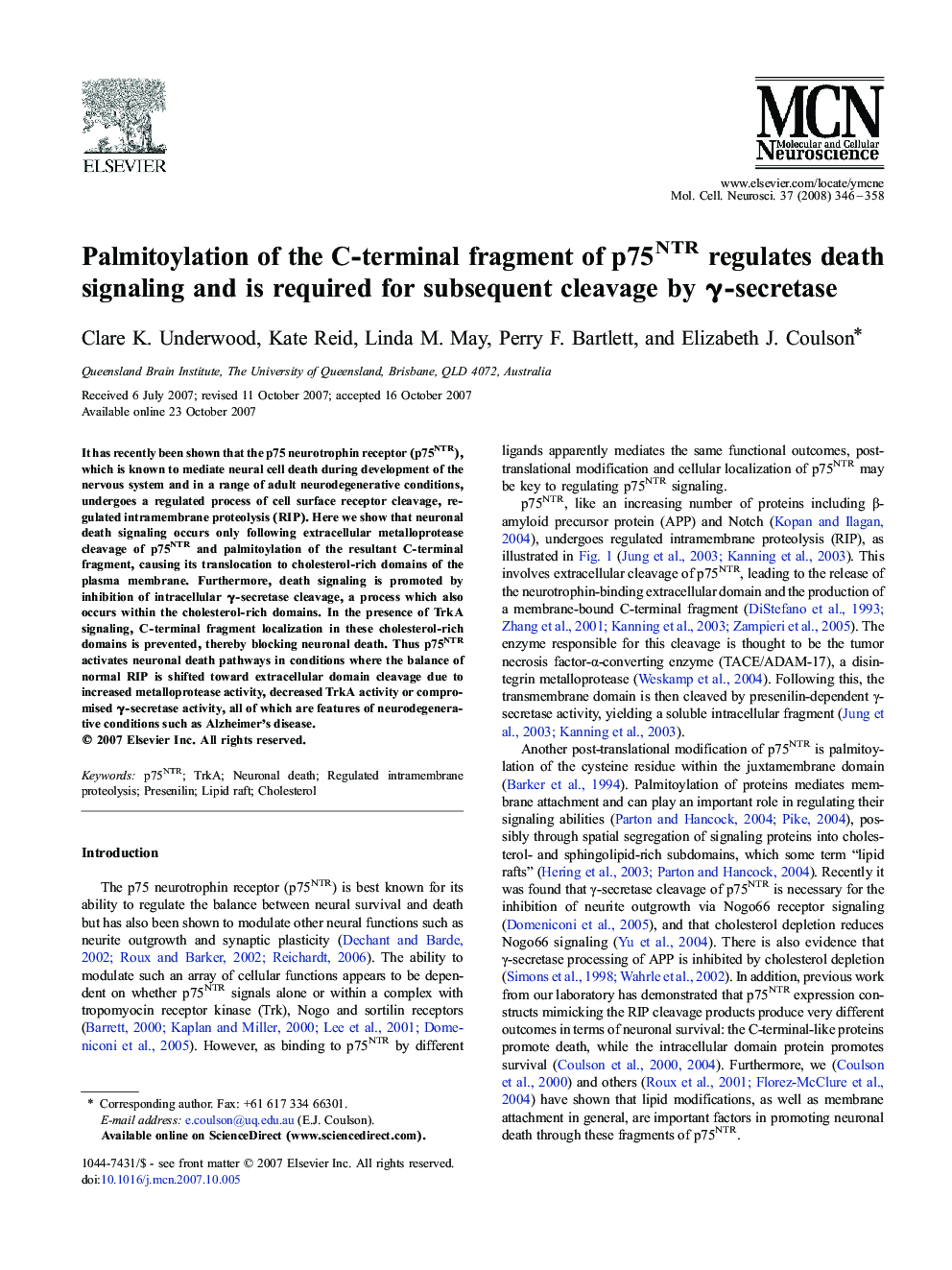| Article ID | Journal | Published Year | Pages | File Type |
|---|---|---|---|---|
| 2199187 | Molecular and Cellular Neuroscience | 2008 | 13 Pages |
It has recently been shown that the p75 neurotrophin receptor (p75NTR), which is known to mediate neural cell death during development of the nervous system and in a range of adult neurodegenerative conditions, undergoes a regulated process of cell surface receptor cleavage, regulated intramembrane proteolysis (RIP). Here we show that neuronal death signaling occurs only following extracellular metalloprotease cleavage of p75NTR and palmitoylation of the resultant C-terminal fragment, causing its translocation to cholesterol-rich domains of the plasma membrane. Furthermore, death signaling is promoted by inhibition of intracellular γ-secretase cleavage, a process which also occurs within the cholesterol-rich domains. In the presence of TrkA signaling, C-terminal fragment localization in these cholesterol-rich domains is prevented, thereby blocking neuronal death. Thus p75NTR activates neuronal death pathways in conditions where the balance of normal RIP is shifted toward extracellular domain cleavage due to increased metalloprotease activity, decreased TrkA activity or compromised γ-secretase activity, all of which are features of neurodegenerative conditions such as Alzheimer's disease.
